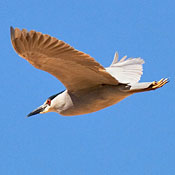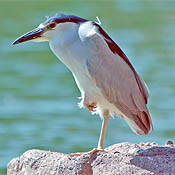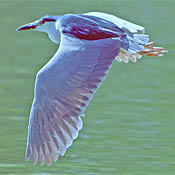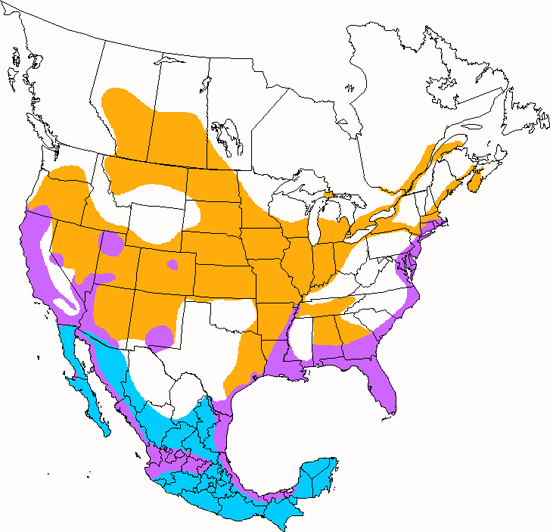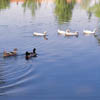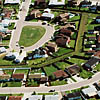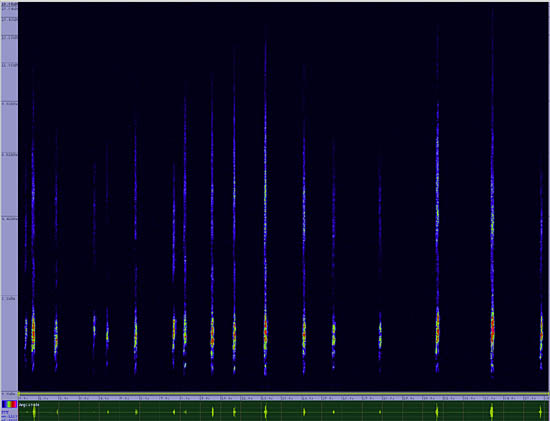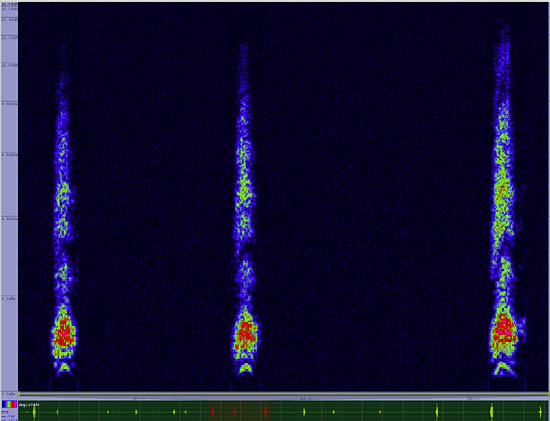Black-crowned Night-Heron
Nycticorax nycticorax

Long Legged Waders

Length: 25 in. (67 cm )
With a range that covers most of the world, this peculiar heron is quite successful. It can be found in marshy areas, swamps, pond edges, lakes, mangroves, agricultural fields and moist grassy areas. It feeds on fish, mice, frogs, and salamanders, but it also frequently raids nests of other herons, ibis and terns to eat nestlings. Its own nest is a large, bulky affair constructed of twigs and sticks and placed in reeds, low trees or shrubs near the water\'s edge. Often the nests are built in small but loose colonies. Mainly active at dusk and night, most of the daylight hours are spent roosting quietly in a tree or in low aquatic vegetation.
The four-digit banding code is BCNH.
Bibliographic details:
- Article: Black-crowned Night-Heron
- Author(s): Dr. Biology
- Publisher: Arizona State University School of Life Sciences Ask A Biologist
- Site name: ASU - Ask A Biologist
- Date published: 13 Jul, 2017
- Date accessed: 11 August, 2025
- Link: https://askabiologist.asu.edu/activities/bird/black-crowned-night-heron
APA Style
Dr. Biology. (Thu, 07/13/2017 - 15:36). Black-crowned Night-Heron. ASU - Ask A Biologist. Retrieved from https://askabiologist.asu.edu/activities/bird/black-crowned-night-heron
Chicago Manual of Style
Dr. Biology. "Black-crowned Night-Heron". ASU - Ask A Biologist. 13 Jul 2017. https://askabiologist.asu.edu/activities/bird/black-crowned-night-heron
MLA 2017 Style
Dr. Biology. "Black-crowned Night-Heron". ASU - Ask A Biologist. 13 Jul 2017. ASU - Ask A Biologist, Web. https://askabiologist.asu.edu/activities/bird/black-crowned-night-heron
Be Part of
Ask A Biologist
By volunteering, or simply sending us feedback on the site. Scientists, teachers, writers, illustrators, and translators are all important to the program. If you are interested in helping with the website we have a Volunteers page to get the process started.



